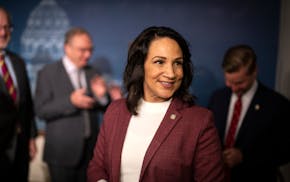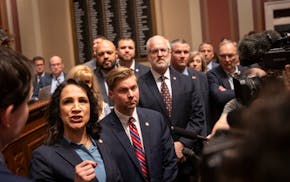Minnesota's high school graduation rate remained steady in 2020, even as that year's graduates saw their last months of school upended by the start of the COVID-19 pandemic.
Nearly 84% of last year's high school seniors graduated in four years. That was a record high, though the rate ticked up by just one-tenth of a percentage point over the class of 2019, continuing a slow but measurable trend of rising graduation rates over the past several years. Dropout rates also followed a longer-term trend, dipping below 4% for the first time in recent memory.
Graduation rates were up among nearly all student groups, and the state continued to make incremental progress in reducing the persistent gaps between students of color and white students. Minnesota Education Commissioner Heather Mueller applauded the "perseverance" of the students who finished out high school in the early, uncertain months of the pandemic — but noted that the state has more work to do to ensure all students can earn their diplomas.
"We know this is more than just an achievement gap," she said. "The achievement gap is a symptom that aligns with an access gap, an economic gap, an opportunity gap, and often, a hope and belief gap."
About 89% of white and Asian students graduated in four years, compared to 70% of Hispanic students and 69% of Black students. Among American Indian students, the graduation rate was just under 56%, but that group saw the biggest gains in 2020, with the rate rising nearly five percentage points over a year earlier.
Mueller said her department will take a close look at how districts are faring to see if there are successful strategies that could be replicated. Schools, she said, should build on the work they've done during the pandemic to ensure students were keeping up and feeling supported. That includes continuing to work with outside community groups on things from food programs to internships.
In the metro area, Mahtomedi Public Schools had the highest graduation rate: 98%. On the other end of the spectrum, about 15 nontraditional schools and districts, including charter schools, online schools and intermediate districts serving students with complex needs, graduated fewer than half of their students. Among traditional districts, Brooklyn Center had the lowest rate, with 59% of students graduating in four years.
Among large districts, the graduation rate was flat in Anoka-Hennepin at about 86% and dropped slightly in Minneapolis Public Schools to about 74%. St. Paul Public Schools, meanwhile, saw graduation rates rise by two percentage points to about 78%.
Joe Gothard, St. Paul's superintendent, said the district has made extra efforts since the start of the pandemic to check in with students and make sure they're getting the help they need. But he said work done at all grade levels is behind any shift in the graduation rate.
"Graduation results are not only the result of the senior year," he said.
Richfield Public Schools had one of the state's biggest year-over-year gains. The district's 86% graduation rate amounted to a nearly 12-percentage-point jump. Superintendent Steven Unowsky said Richfield is starting to see the benefits of some shifts in how and when students learn. About four years ago, the district changed the school-day schedule for high school students. It added in an additional class period each day, along with dedicated "seminars" on specific subjects, where students can meet with teachers in a smaller group.
Unowsky said his district, like most, found more students struggling during the pandemic and had to change some of its approaches to tracking and counseling students in danger of not graduating. Richfield administrators started meeting every other week to go through a list, student by student, of those struggling and come up with plans to keep them on track.
It's a system the district plans to keep. Unowsky said building on last year's success means recognizing the challenges each student has faced and finding new ways to help them succeed.
"The biggest thing we've noticed in the pandemic is it changed the predictability of who was succeeding and who was not," he said.
Graduation rates are typically released the following spring, so data for the class of 2021 won't be available until 2022.
Erin Golden • 612-673-4790
MaryJo Webster • 612-673-1789

Want to share info with the Star Tribune? How to do it securely

'Safe recovery sites' would offer syringes, naloxone and more to people using drugs. The plan could be in peril.
New Minnesota GOP leaders seek peace with party's anti-establishment wing

Who is Republican Lisa Demuth, Minnesota's first House speaker of color?

